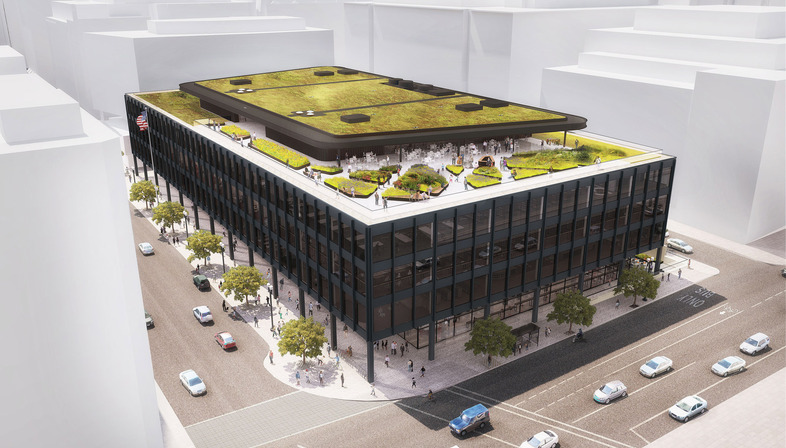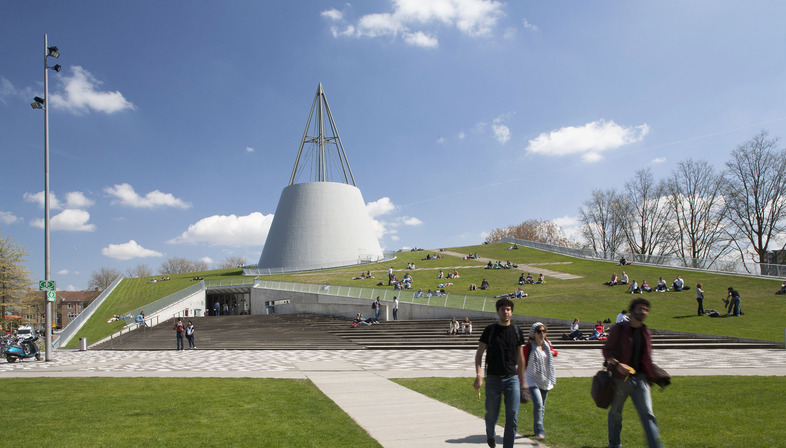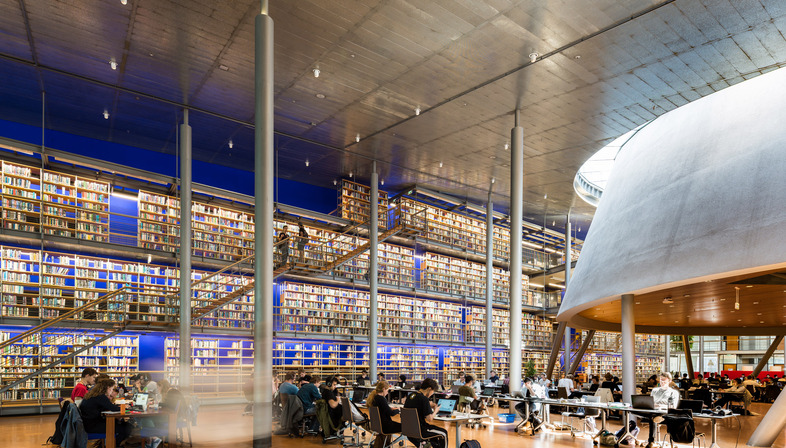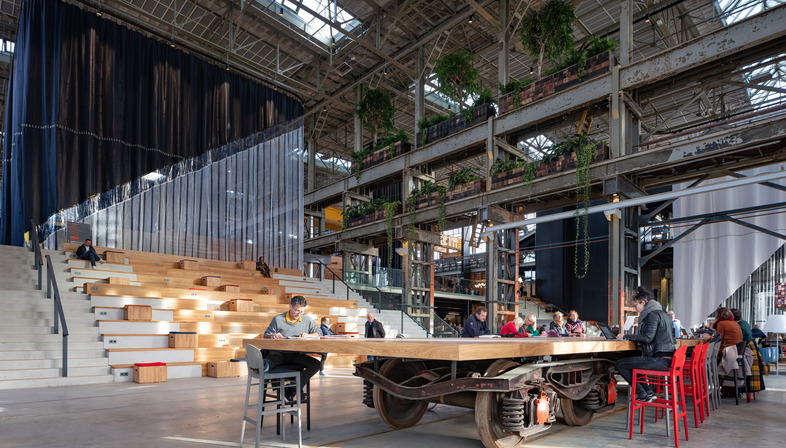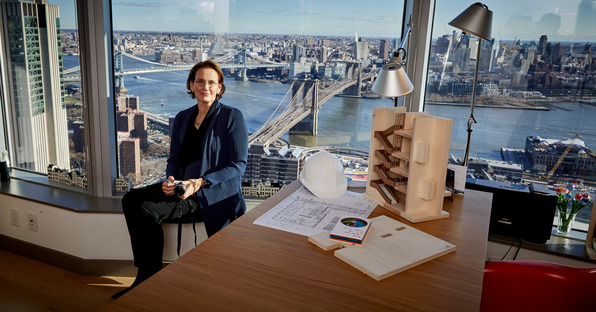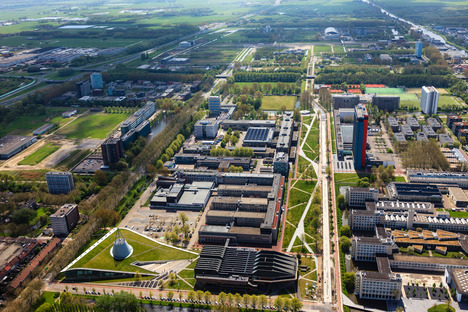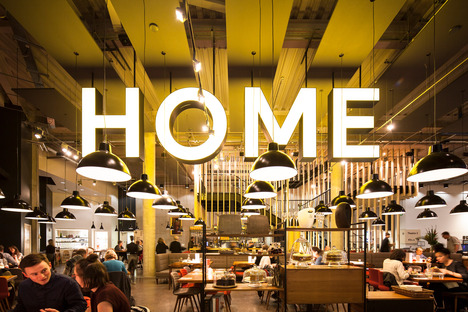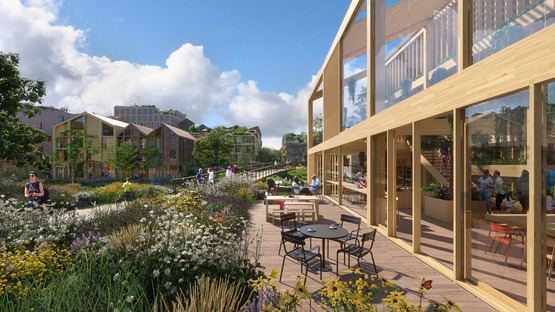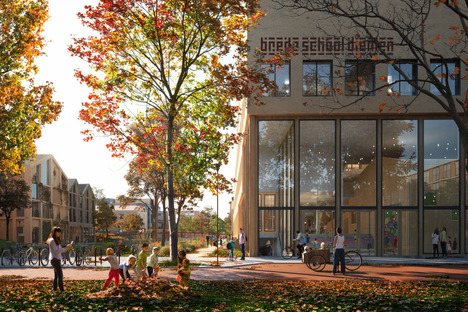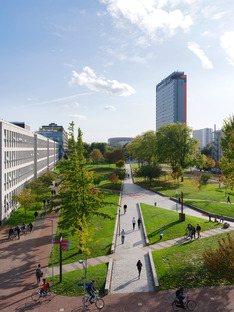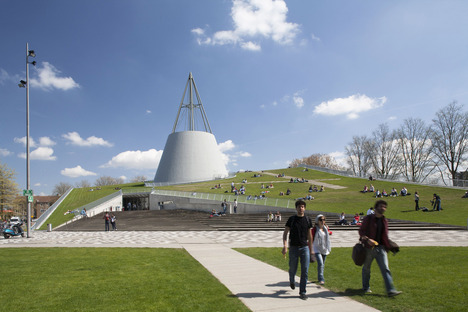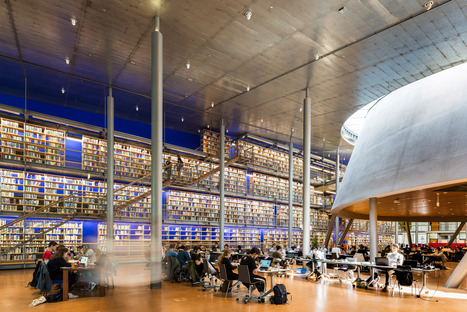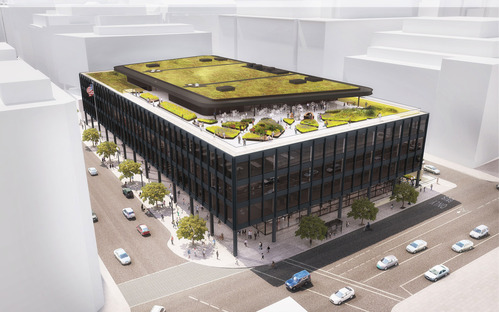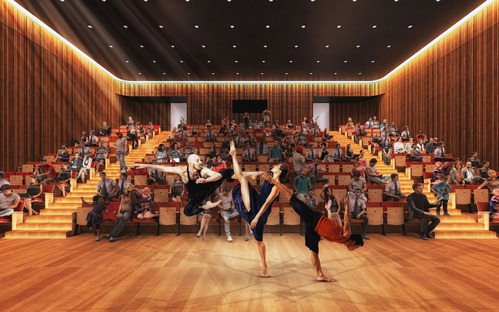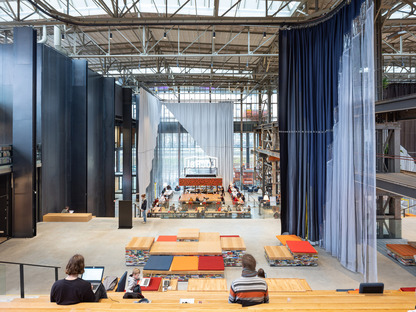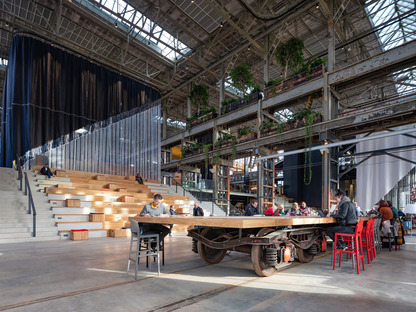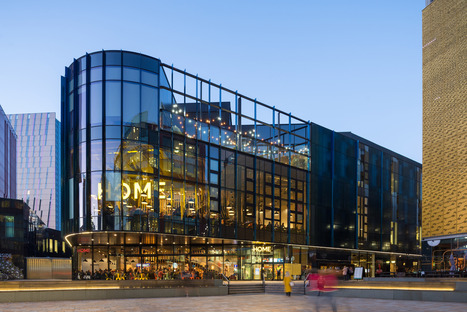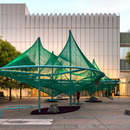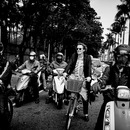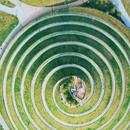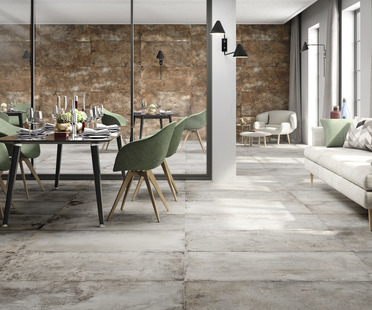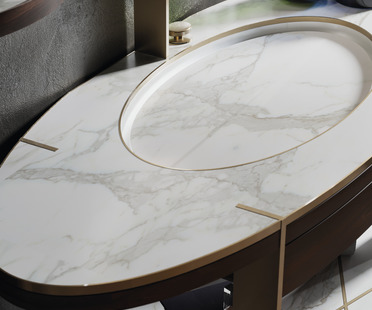11-08-2020
ONSTAGE: INTERVIEW WITH FRANCINE HOUBEN, MECANOO
Francine Houben, Mecanoo,
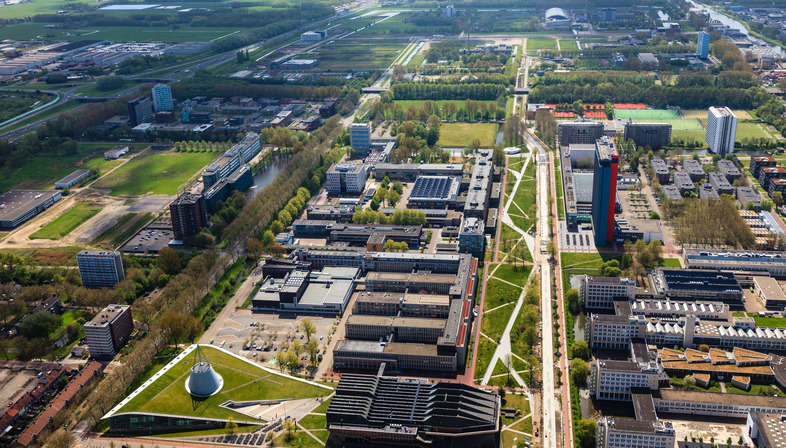 It is with Francine Houben, Founding Partner and Creative Director of Mecanoo, that I have the pleasure of this chat, trying to understand how, during her career so demanding and full of success, she managed to reconcile the role of mother and architect, with works widely spread from Europe to Asia, of an important academic career and the active participation in many other activities concerning the architectural sector. I have mentioned a large part of the prestigious awards she has received, an unusual amount for a woman, and it seems also fair to underline that only a few month ago she has been elected as TU Delft Alumnus. A role different from the others, for sure, of particular satisfaction, since received by the university where she studied and graduated with honors. A recognition that, as the Rector Magnificus of the Alma Mater has pointed out, has been granted only to a few others, citing with pride, the two works that have left remarkable signs on the campus: the iconic TU Delft Library and the pleasant Mekelpark. In the fall of the year, we will see in Washington D.C the opening of the highly anticipated and extremely charismatic Martin Luther King Jr. Memorial Library, 'the modernist steel and glass box from 1972 designed by Mies van der Rohe’, recently renovated and transformed by Mecanoo.
It is with Francine Houben, Founding Partner and Creative Director of Mecanoo, that I have the pleasure of this chat, trying to understand how, during her career so demanding and full of success, she managed to reconcile the role of mother and architect, with works widely spread from Europe to Asia, of an important academic career and the active participation in many other activities concerning the architectural sector. I have mentioned a large part of the prestigious awards she has received, an unusual amount for a woman, and it seems also fair to underline that only a few month ago she has been elected as TU Delft Alumnus. A role different from the others, for sure, of particular satisfaction, since received by the university where she studied and graduated with honors. A recognition that, as the Rector Magnificus of the Alma Mater has pointed out, has been granted only to a few others, citing with pride, the two works that have left remarkable signs on the campus: the iconic TU Delft Library and the pleasant Mekelpark. In the fall of the year, we will see in Washington D.C the opening of the highly anticipated and extremely charismatic Martin Luther King Jr. Memorial Library, 'the modernist steel and glass box from 1972 designed by Mies van der Rohe’, recently renovated and transformed by Mecanoo. Rendering of Martin Luther King Jr Memorial Library in Washington D.C di Mecanoo. Image courtesy of Mecanoo.
1—Francine, you belong to that category of women who have amply demonstrated their capacity to achieve very important results without ever accepting that challenge between man and woman limited to the desire to only affirm the superiority of one over the other. How do you see in the world of architecture, the relationship between the two genres, often based on competitiveness and not on collaboration?
I don’t see the world of architecture as a battle between genres. For sure women carry an extra weight while balancing the role of being a mother, raising children and keeping an active position in the world of architecture. I experienced that myself and it wasn’t always an easy task, don’t forget that in my generation it wasn’t considered normal for a woman to have a full-time job, thankfully I have a very supporting family who would be there for me along the way. In the Netherlands we have the Papadag on which the father stays at home with their children. In many ways the Netherlands was not always progressive towards gender equality and I think the younger generations have a very different way and perception on genre then we had when we were young adults. We need to continue working to a more balanced and harmonious world.
2—What did it mean for you to work and take care of your family, which, among other things, is a large family? What types of sacrifices has represented to satisfy the needs of two worlds of equally fundamental importance and certainly so demanding?
To be an architect you need a great dose of passion, it’s a full-time commitment, 365 days a year almost. On top of that you need to balance your family life - my three children - that was not always an easy combination. So, it is really about how to balance life and business. In my time, in The Netherland, it was really not normal for women to have a full-time job. Socially it was not well-accepted, I was amazed because my mother, she brought me to school maybe once when I was young, she never did it frequently. I was number four of five children, it was an extended family. My mother was a great mother, but she was not always with me, taking care of me, I mean she had five children to share her attention.
What I really like is the idea of extended family, it’s your neighbors, your brothers and sisters, your cousins, everyone together as a family, not just the nuclear family. We all take care of each other, and having family support for your career, and to raise your children. That was part of my life, and that was how I could manage. I think it was also good for my children, because they don’t only focus on their parents, but are more connected to the outside world. Having an extended family was the core that gave me the energy to work so intensely as an architect, but also to raise three children.
3—Named AJ’s Woman Architect of the Year 2014 and winner of important awards, which have been granted to very few of your colleagues, which kind of reaction did you have in such rewarding moments and what did you think about your female colleagues who will have to continue fighting, as you certainly did, to see recognized those rights not always granted?
For me it is difficult because I never wanted to promote myself as a female architect, I want to be good as an architect regardless of gender. As I always say, I was born as a woman, that’s the way it is. I’m very proud of the work of Mecanoo and I often see these awards as a celebration of the work and dedication that I and all the Mecanoo’s put into our designs. I strongly believe that architecture is about teamwork, about being visionary and supportive at the same time. Women are especially good at that.
Delft University of Technology Library by Mecanoo. Image courtesy of Mecanoo.
4—When you decided to start practicing architecture, there was a competition that has been decisive for your beginnings. Do you believe that today competitions still hold the same value and possibilities in helping young people to distinguish themselves and start the profession?
Yes, when we were still students, in 1979, there was a residential competition at Kruisplein in Rotterdam which I entered with two others colleagues. We won that competition in 1980 and the next four years we worked on it as students. Our quest was for urban renewal of housing and the architectural innovation that goes with it. That was our first competition. Working around the world for almost four decades I can tell you that much has changed. Client’s ambitions, political agendas, user’s participation. Every country is different. We need to adapt. Even with so many changes I still think competitions hold that power that can elevate your work among your peers and help young architects boost their careers. Competitions remain an important medium for architects and designers.
5—Working also in countries that are not part of Europe, where the organization of work is planned very differently, and I mean in particular in Asia, how did you find it? Which method do you prefer, considering the process that precedes and accompanies the construction site?
Every country is different. It’s different to work in mainland China and Taiwan. Often there, the client is not the user, that makes it different. Even in the Taiwan project, and the Longgang Cultural Centre, the client was the one to make sure that the whole thing was built.
The client is not the user, usually the user comes in later. Things go quicker, of course. Decisions are made rather quickly. What makes it so interesting working in mainland China and Taiwan, is how fast it changes. Because we’ve worked there for almost ten years, we see how fast the country has changed, in a positively way. More open, and more democratic.
I’m happy that we are building two large public buildings in China, to provide more pleasant space for the people there. We will create unique public space inside and around our buildings, I hope it could be part of the positive change. It’s two big challenges, two big adventures I can tell you. But we are extremely proud of these two projects.
Delft University of Technology Library of Mecanoo. Photograph by Greg Holmes.
6— What encounters in the world, for you, who have been and still are a passionate traveler, have represented precious moments on a human and professional level?
For me, this crisis is a confirmation of my vision of the future 'Forward to basics'. Over the past decades, encountering people all around the world has showed to me and underlined what everyone everywhere wants. The very simple things, to take care of their children and to be able to provide them with a better future. It’s about friends, family and communities. We need to recognize the value of every individual, people’s engagement with each other, or culture, or nature, or in many cases a combination of both. Our attitude to Earth needs to change, nature has an irreplaceable value and beauty. It’s vital that we reconnect to it.
7—The performance, in its multifaceted artistic aspects, is often an integral part of your works and this year at the Yale School of Architecture you will be focusing on reconsidering the Opera of the Future, working closely with the Yale School Of Drama and Yale School of Music. This performance between architecture and different forms of art is something that to me seems you have always pursued as a constant in your projects, not only in those strictly related to theatrical and musical stages. Do you believe that your research, in a redundant world like the one we are living in, can help architecture to create a greater involvement and a stronger connectivity with society?
On my latest book I say at a certain point “finding identity in a globalized world”. In many ways, I believe that’s in part what I have done with my team at Mecanoo over the past three decades. At least I like to think I have. Traveling is extremely important, to meet other cultures, experience other climates, other believe systems and political environments. The world is vast and full of different identities, yet, architects often try to reflect the same aesthetic everywhere.
For me that’s not interesting, it’s part of our philosophy, the Mecanoo philosophy, that we look carefully at the users, the physical context and of course the potential of a buildings function. This approach allows us to deliver unique solutions for each situation, allowing us to combine all the disciplines at Mecanoo: architecture, urban planning, landscape and interior. I’m very much interested in the multidisciplinary process and how all these disciplines can influence one another. I believe our design process allow us to solve complex challenges and create inspiring places for people.
LoCal Library in Tilburg, Netherlands by Mecanoo. Photograph by Ossip Architectuurfotografie.
8—With the help of the virtual medium, especially regarding the work that, carried out for certain sectors mainly in the office, could be performed from home, do you believe that it will be possible a less urban centered type of life, encouraging to a healthier lifestyle, more in contact with nature, as you have often proposed by redeveloping peripheral areas, which were silent and left to languish?
I think that the ongoing Covid-19 pandemic challenges us to re-imagine and re-think how we live together as a society and what our role as design professionals should be. I would like to reflect on this not only thinking about architecture practices, because architecture is all about multi-disciplinary teamwork.
The concepts of public space and social distance will become central in the future development of our cities and the connection with the countryside. Mobility as we know will change. As the current pandemic unfolds, we see how our systems of support and supply are vulnerable to disruption and most of our networks have been exposed as inadequate. Our lifestyle, habits, routines, travel and social interactions changed completely over the past few months but also gave us very interesting insights into the office organization and performance. On one hand you notice that most of the staff is able to work from home. What you do notice is that the very youngest, the juniors and interns, need more guidance. That is difficult from a distance.
During these uncertain times all the Mecanoo’s are free to choose whether they work from home or at the office. Some have gone to their holiday home or to their parents. I gave them the freedom to do so. I can't decide for anyone personally what is the safest situation for them.
But this is also the chance to embrace the digital realm like we have never done before and to showcase the profession's deep ability to adapt, collaborate, exchange and work in an interdisciplinary way. We have all the technology and solutions available to keep the normal communication and exchange channels open: phone, e-mail, WhatsApp, Teams, Skype, Trello – and all the variety of social media platforms too. It’s impressive the number of options we have available, and in many ways the real challenge is to set up a system that works best for your office and design teams.
9—Do you believe that technology will one day compromise social connections and perhaps even physical relationships and that, in a world increasingly geared towards technology, a dangerous and serious gap in society can occur between those who will not have the opportunity to practice activities related to this sector and who will instead dominate the new emerging reality?
Like most of us I carry my phone everywhere I go, I am active on social media and I’m always interested on new app’s that can help me to be more efficient. Technology has innumerous benefits and I personally don’t have a dark view on the future use of technology. I believe that people will eventually find the right balance, even if the road is a bit bumpy along the way.
In some ways we can see that is already happening. Technology is part of everyday life. The internet became accessible to the wider public around the mid-nineties and over the course of the next two decades the developments have been tremendous and mind blowing. With every great discovery or technological development there is always the risk that a great idea can be subverted and used in a negative way, that rule applies to everything.
Humans as social beings cannot exist without human physical contact, even if we create digital versions of it. In fact, social media does exactly that. Now, after its first decade we can start to see many issues that occur due to poor regulation or privacy policy issues which affected many. We live and we learn, and hopefully we improve.
I’ve been recently organizing our archives in our office in Delft, going through hundreds of slides if not thousands judging by the number of boxes, understanding not only the content but what should be digitalized as part of the collective memory of the oeuvre of Mecanoo. This is a good example of before and after digital Era.The introduction of technology is a forced evolution which we cannot disconnect from, our profession needs to adapt to the other industries around us, if not we may risk becoming irrelevant. Architecture is in fact known for being a conservative industry, slow changing, so in many ways we won’t see architecture changing so fast like many other industries. The role of the architect will eventually change, that I am sure of, it will always adapt and respond to the needs of society, that’s the mission of the architect.
Virginia Cucchi
Credits:
Mecanoo: https://www.mecanoo.nl/
Photographs:
Cover - Francine Houben © Roger Neve / Courtesy of Mecanoo
1 - Mekel Park © Seibe Swart / Courtesy of Mecanoo
2 - Mekel Park © Ossip Architectuurfotografie / Courtesy of Mecanoo
3 - TU Library / Courtesy of Mecanoo
4 - TU Library © Greg Holmes / Courtesy of Mecanoo
5 - 6 Martin Luther King Memorial Library, Washington D.C / Courtesy of Mecanoo
7 - 8 LocHal Library / Courtesy of Mecanoo
9 - 10 HOME Arts Centre / Courtesy of Mecanoo
11- 12 Holland Park West / Courtesy of Mecanoo










